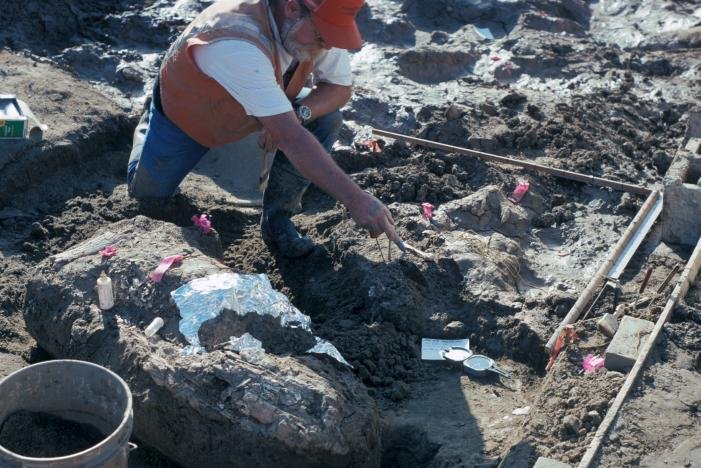MessageToEagle.com – When did humans first appear in North America? That’s a question no scientist can answer. There are of course several hypotheses based on archaeological evidence, but new discoveries force researchers to re-evaluate previous theories, and that can sometimes lead to controversy in the scientific community.
A new study published in “Nature” has potential to change the history books. Scientists have discovered evidence of human activity in North America since 131,000 years ago, and not 24,000 years ago as previously thought.

In southern California, researcher found an assemblage of broken mastodon bones and chipped rocks that suggest that a stone tool-wielding people snacked on the meat and marrow, or perhaps shaped tools out of the massive animal’s skeleton, when it died some 130,000 years ago.
See also:
Artifacts Discovered In Ancient Florida Sinkhole Can Re-Write History Of North America
Secrets Of Mysterious Lost Kingdom Of Calusa In Florida And The Shell Indians
‘Ice Bridge Theory’ Of North America’s Inhabitation – Challenged
No human skeletal remains were found. But the stone tools’ wear and impact marks and the way in which mastodon limb bones and molars were broken, apparently in a deliberate manner shortly after the animal’s death, convinced the researchers humans were responsible. They performed experiments using comparable tools on elephant bones and produced similar fracture patterns.
“People were here breaking up the limb bones of this mastodon, removing some of the big, thick pieces of mastodon limb bones, probably to make tools out of, and they may have also been extracting some of the marrow for food,” said archeologist Steven Holen of the Center for American Paleolithic Research in South Dakota.
Needless to say, that the researchers’ findings have been met with widespread skepticism, highlighting just how hard it is to reframe historical narratives.
Some skeptics suggested alternative explanations about the material excavated beginning in 1992 at a freeway construction site, suggesting the bones may have been broken recently by heavy construction equipment rather than by ancient humans.
Thomas Deméré, a paleontologist at the San Diego Natural History Museum and one of the paper’s authors, disagrees with skeptics. “Of course extraordinary claims like this require extraordinary evidence and we feel that [this site] preserves such evidence,” he said in a press conference.
MessageToEagle.com
Expand for references






